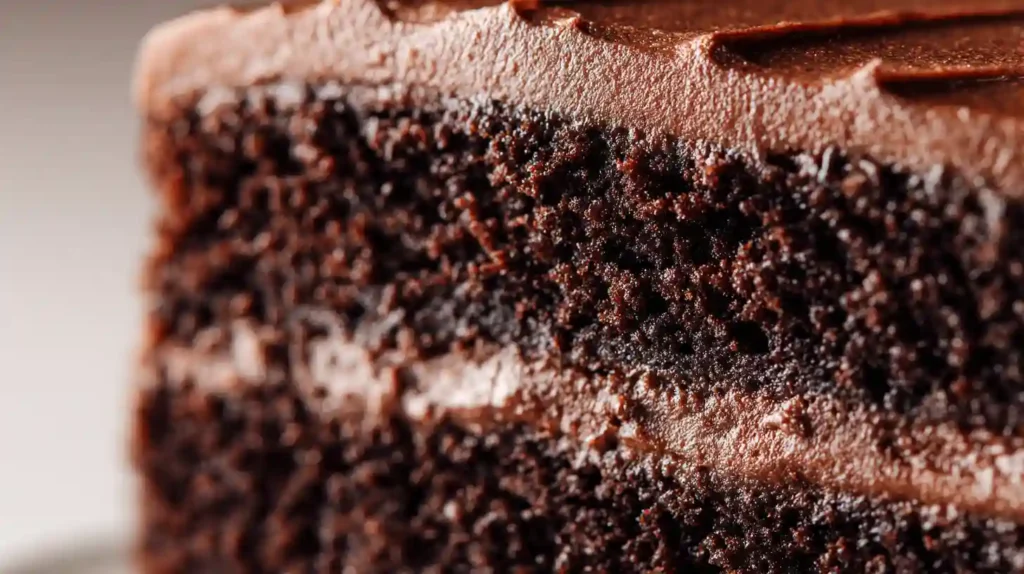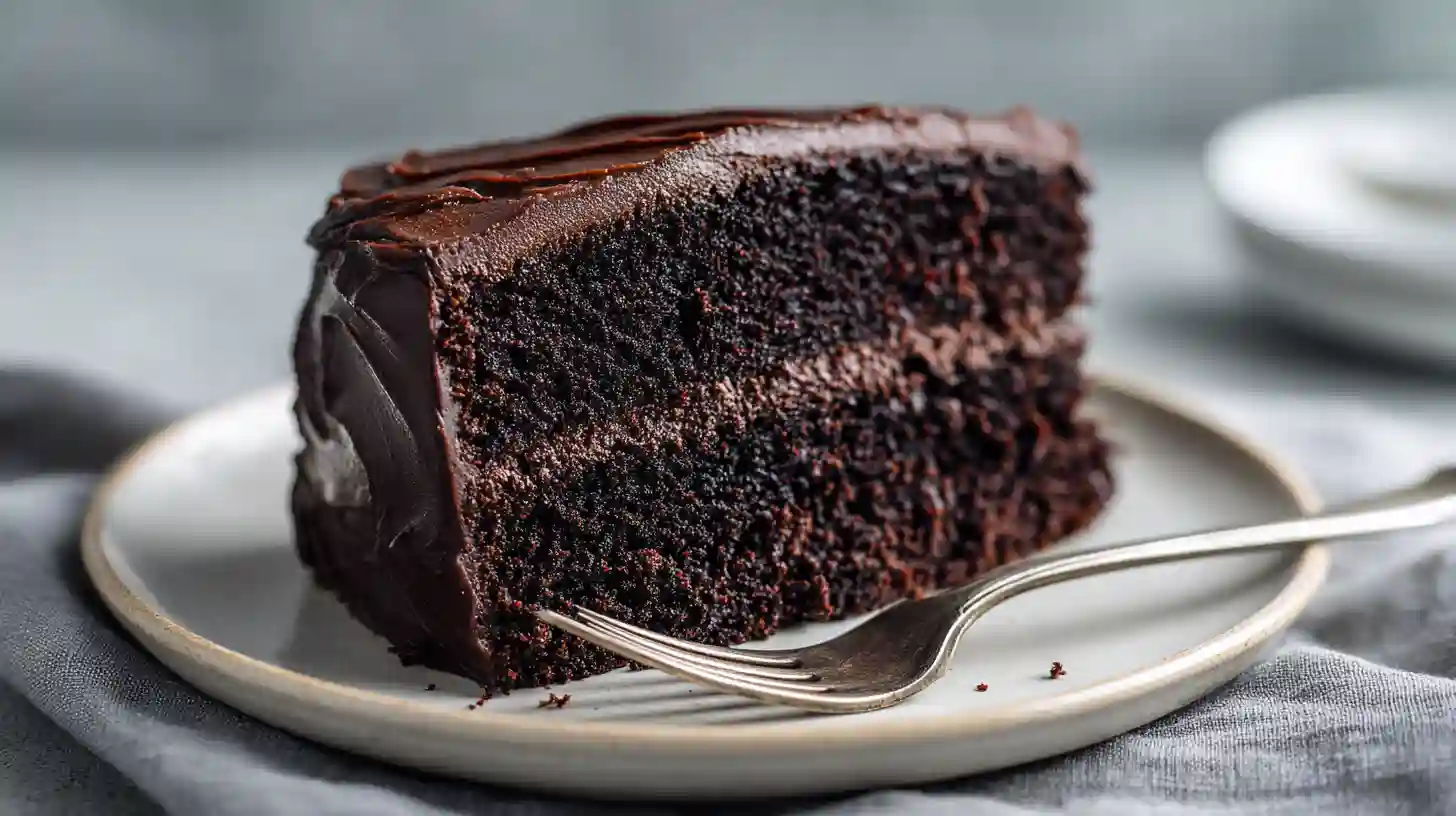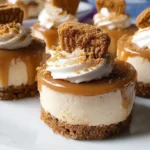There’s something about chocolate cake that fixes everything, isn’t there? Last Tuesday, my sister called me at 11 PM—stressed about a presentation, kids finally asleep, and desperately needing “something good.” I stayed on the phone while she mixed this cake together. By midnight, her kitchen smelled like a chocolate dream, and by 12:30, we were both eating warm cake through our respective screens, laughing about how ridiculous and perfect it all was. That’s what I love about this recipe—it doesn’t judge your timing or your reasons.
What Makes This Chocolate Cake Different
Listen, I’ve tried a lot of chocolate cakes. The ones that promise moisture but deliver sawdust. The ones with seventeen steps and specialty ingredients you’ll never use again. This Midnight Fudge Cake isn’t like that. It uses everyday pantry staples, comes together faster than you’d expect, and—here’s the thing—it actually stays moist for days. Not just “acceptable on day two” moist, but genuinely tender and fudgy even on day three. The secret? Boiling water in the batter. Sounds weird, works beautifully.
Gathering Your Ingredients
Before we dive in, let’s talk about what you’ll need. Nothing fancy here—just real ingredients that create extraordinary results when combined properly.
For the Cake Base
- All-purpose flour (2 cups) – this forms your structure
- Granulated sugar (2 cups) – sweetness and moisture
- Unsweetened cocoa powder (3/4 cup) – pure chocolate intensity
- Baking powder (1½ teaspoons) – helps it rise
- Baking soda (1½ teaspoons) – extra lift and tenderness
- Salt (1 teaspoon) – brings out all the flavors
- Buttermilk (1 cup) – adds tang and keeps it tender
- Vegetable oil (1/2 cup) – moisture that lasts
- Large eggs (2) – binding and richness
- Vanilla extract (2 teaspoons) – warmth and depth
- Boiling water (1 cup) – the magic ingredient
For That Silky Frosting
- Unsalted butter (1 cup, softened) – creamy foundation
- Powdered sugar (3 cups) – smooth sweetness
- Cocoa powder (3/4 cup) – more chocolate, obviously
- Milk (1/2 cup) – gets the consistency perfect
- Vanilla extract (1 teaspoon) – rounds everything out
- Pinch of salt – balances the sweetness
Optional finishing touches include chocolate shavings, fresh raspberries, or toasted pecans. I usually keep it simple, but special occasions deserve a little extra.

The Actual Baking Process
Okay, let’s get real about how this actually works. No pretending it’s complicated when it’s not.
Getting Your Oven Ready
Set your oven to 350°F. While it heats, grab two 9-inch round pans and give them a thorough greasing—I use butter, then dust with flour. Tap out the excess. This prevents any heartbreaking sticking situations later. Trust me, I learned this the hard way during a birthday cake disaster in 2019.
Combining the Dry Components
Take your biggest mixing bowl. Dump in the flour, sugar, cocoa, baking powder, baking soda, and salt. Whisk it around until everything’s evenly distributed. This step matters more than you’d think—lumpy cocoa powder creates weird dense spots nobody wants to bite into.
Preparing the Wet Mixture
In another bowl, whisk together your buttermilk, oil, eggs, and vanilla. Beat it pretty vigorously—you want everything emulsified and smooth, not separated and streaky. About 30 seconds of good whisking does it.
Bringing It All Together
Pour your wet mixture into the dry ingredients. Mix on low speed—or stir by hand if you’re feeling traditional—until just combined. Don’t overmix. Some small lumps are fine. Overmixing develops gluten, which makes your cake tough instead of tender. Stop when you can’t see dry flour anymore.
The Boiling Water Trick
Here’s where it gets interesting. Carefully stir in that cup of boiling water. The batter will look alarmingly thin—almost like chocolate soup. Don’t panic. This is exactly right. The hot water blooms the cocoa powder, intensifying the chocolate flavor and creating that impossibly moist texture. Mix until smooth, then split the batter between your prepared pans.
Into the Oven
Bake for 30-35 minutes. Start checking at 30—every oven runs differently. A toothpick inserted in the center should come out clean or with just a few moist crumbs. Not wet batter, but not bone dry either. Let the cakes cool in their pans for about 10 minutes, then turn them out onto cooling racks. They need to cool completely before frosting, or you’ll end up with melted frosting sliding everywhere.
Creating the Fudge Frosting
While your cakes cool, make the frosting. Beat softened butter until it’s fluffy and pale—about 2 minutes. Add the powdered sugar and cocoa gradually, alternating with splashes of milk. Beat until it’s smooth, glossy, and spreadable. Add that pinch of salt and the vanilla. Taste it. Adjust if needed. When the cakes are completely cool, frost the top of one layer, stack the second on top, then cover the whole thing in that gorgeous chocolate frosting.
Pro Tips from Experience
- Room temperature ingredients mix better—let eggs and buttermilk sit out for 30 minutes
- Use parchment paper circles in the bottom of your pans for foolproof release
- An offset spatula makes frosting infinitely easier
- Don’t skip the cooling step—patience pays off here
- Store leftover cake covered at room temperature for up to 3 days
- A crumb coat (thin first layer of frosting) makes the final coat look professional
Ways to Switch It Up
Once you’ve mastered the basic recipe, you might want to experiment. Here are variations I’ve actually tried and loved:
- Add instant espresso powder (1 tablespoon) to deepen the chocolate flavor without making it taste like coffee
- Fold in mini chocolate chips for extra bursts of chocolate
- Try peppermint extract instead of vanilla for a holiday twist
- Add a layer of raspberry jam between the cake layers
- Make it gluten-free using your favorite cup-for-cup flour blend
- For vegan adaptation, use flax eggs and plant-based milk
Troubleshooting Common Issues
Sometimes things don’t go perfectly. Here’s how to fix common problems:
- Cake stuck in pan? Run a knife around the edges and tap firmly on the counter
- Dome-shaped top? Level it with a serrated knife before frosting
- Frosting too thin? Add more powdered sugar gradually
- Frosting too thick? Thin with milk, one teaspoon at a time
- Cake dry? You may have overbaked—check earlier next time
- Dense texture? Could be overmixing or old leavening agents
Ingredient Substitutions That Work
- No buttermilk? Mix 1 cup milk with 1 tablespoon lemon juice, let sit 5 minutes
- Can swap vegetable oil for melted coconut oil
- Greek yogurt works instead of buttermilk
- Dutch-process cocoa gives deeper color but natural cocoa works fine
- Brown sugar instead of white adds molasses notes
Storage and Serving Suggestions
Keep this Midnight Fudge Cake covered at room temperature for up to three days. It actually gets better on day two—the flavors meld and develop. For longer storage, refrigerate for up to a week, but bring to room temperature before serving for best texture. You can also freeze unfrosted layers for up to three months.
Serve it however feels right. I love it with vanilla ice cream slowly melting into the warm cake. Coffee pairs beautifully. So does cold milk. Sometimes just a fork and a quiet moment works perfectly.
Questions People Actually Ask
Can I make this ahead for a party?
Absolutely. Bake the layers the day before, wrap them tightly in plastic wrap, and refrigerate. Frost the day of your event. The cake stays fresh and actually slices more cleanly when chilled.
Why does the recipe call for both baking powder and baking soda?
They work together but differently. Baking soda reacts with the acidic buttermilk for immediate rise and tender crumb. Baking powder provides additional lift during baking. Together, they create the perfect texture.
Can I make this as cupcakes instead?
Yes! Fill cupcake liners about two-thirds full and bake for 18-22 minutes. Makes approximately 24 cupcakes. Check them at 18 minutes with a toothpick.
What’s the best cocoa powder to use?
Both natural and Dutch-process work. Dutch-process gives a darker, richer color and slightly smoother flavor. Natural cocoa provides brighter, more intense chocolate notes. I use whatever I have on hand honestly.
How do I know when it’s done baking?
The cake should spring back when gently pressed, pull away slightly from the pan edges, and a toothpick inserted in the center should come out with just a few moist crumbs. Better to slightly underbake than overbake with chocolate cake.
Can I halve this recipe?
You can, but I’d recommend making the full batch and freezing half. The recipe is already balanced for two layers, and chocolate cake freezes beautifully for future cravings.
What pairs well with this cake?
Vanilla ice cream is classic. Fresh berries add brightness that cuts through the richness. Whipped cream works beautifully. Hot coffee or cold milk both complement the chocolate perfectly.
Why This Recipe Works
After making this Midnight Fudge Cake probably fifty times now, I understand why it keeps working. The oil keeps it moist longer than butter-based cakes. The boiling water creates that fudgy texture without any complicated techniques. The proportions are balanced—not too sweet, not too bitter, just deeply, satisfyingly chocolatey. It’s reliable in a way that makes you look like you know what you’re doing, even when you’re winging it at midnight because someone needs cake.
Make this cake. Share it with people you care about, or keep it all to yourself. Either way, you’ll understand why some recipes earn names like “midnight” and “decadent”—they deliver on their promises, no matter when you need them.

Midnight Fudge Cake
Ingredients
Method
- Preheat oven to 350°F (175°C). Grease and flour two 9-inch round cake pans.
- In a large bowl, whisk together flour, sugar, cocoa powder, baking powder, baking soda, and salt until well combined.
- In a separate bowl, whisk together buttermilk, oil, eggs, and vanilla extract until emulsified and smooth.
- Pour wet ingredients into dry ingredients and mix on low speed until just combined. Do not overmix.
- Carefully stir in boiling water until batter is smooth. The batter will be thin.
- Divide batter evenly between prepared pans and bake for 30-35 minutes, until a toothpick inserted in center comes out clean.
- Cool cakes in pans for 10 minutes, then turn out onto cooling racks to cool completely.
- For frosting: Beat softened butter until fluffy. Gradually add powdered sugar and cocoa, alternating with milk. Beat until smooth. Add vanilla and salt.
- Frost cooled cake layers and serve.
Notes
- Room temperature ingredients blend more smoothly
- Don’t skip the cooling step before frosting
- The boiling water creates the signature fudgy texture
- Cake stays moist for up to 3 days at room temperature


